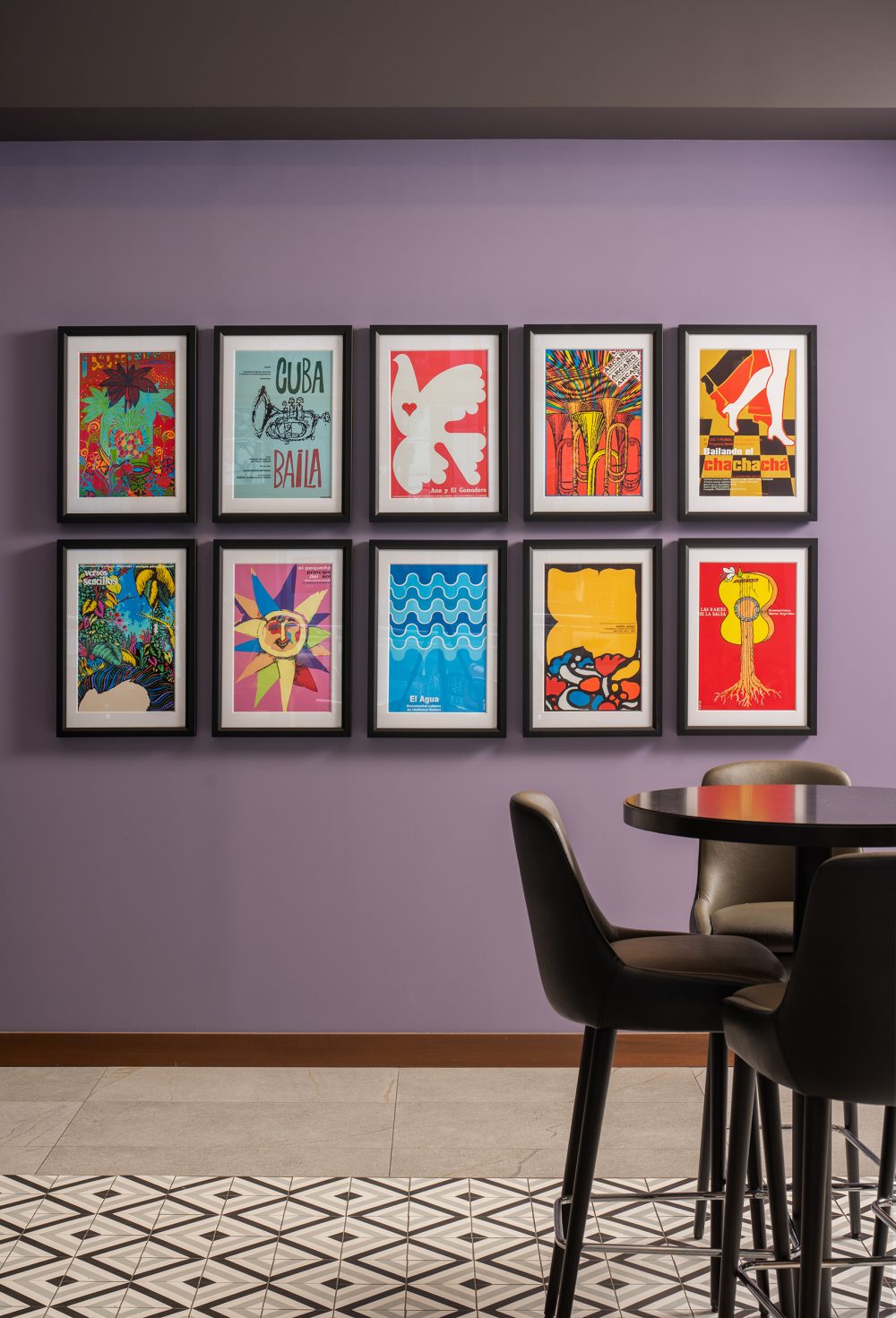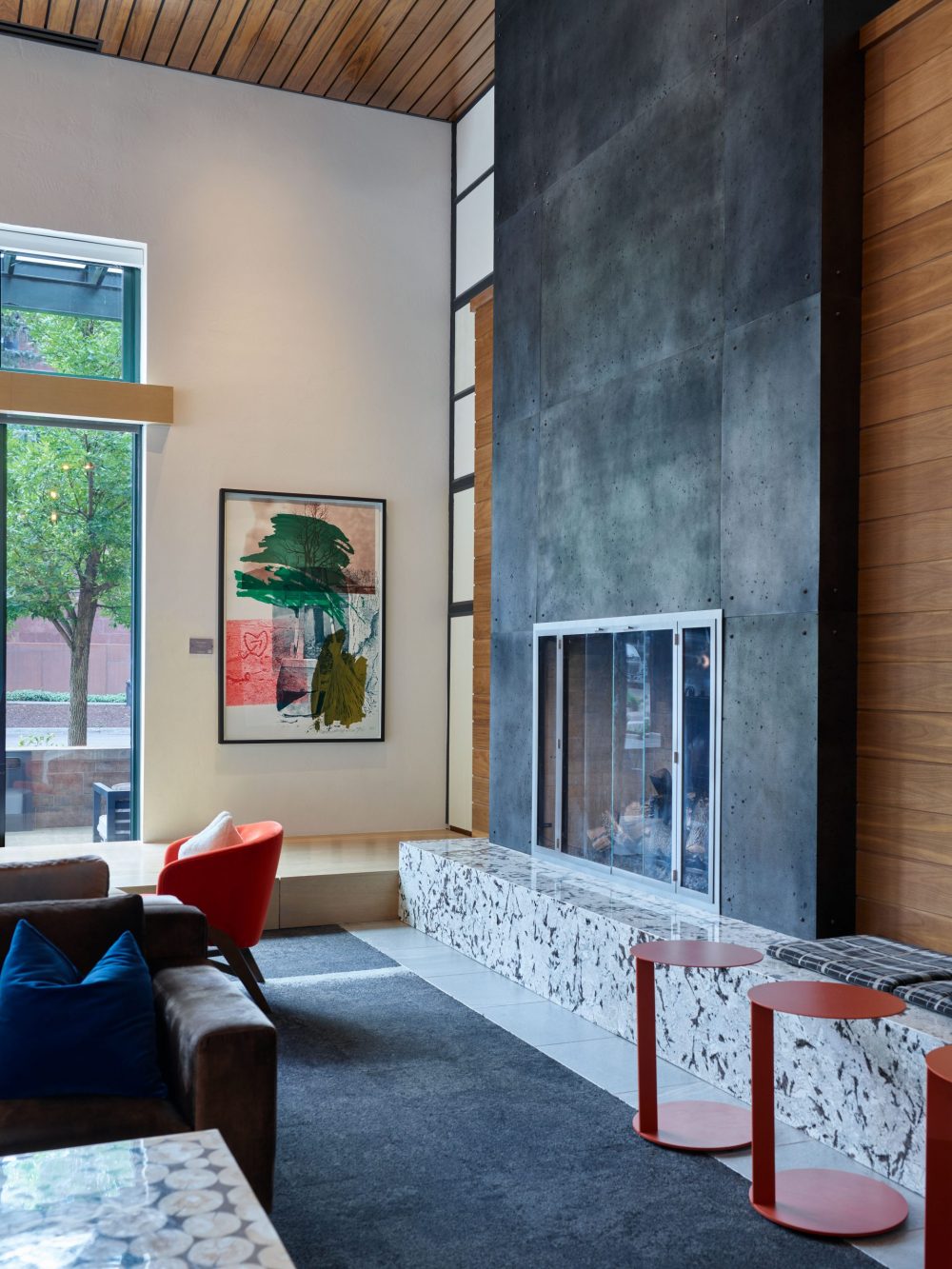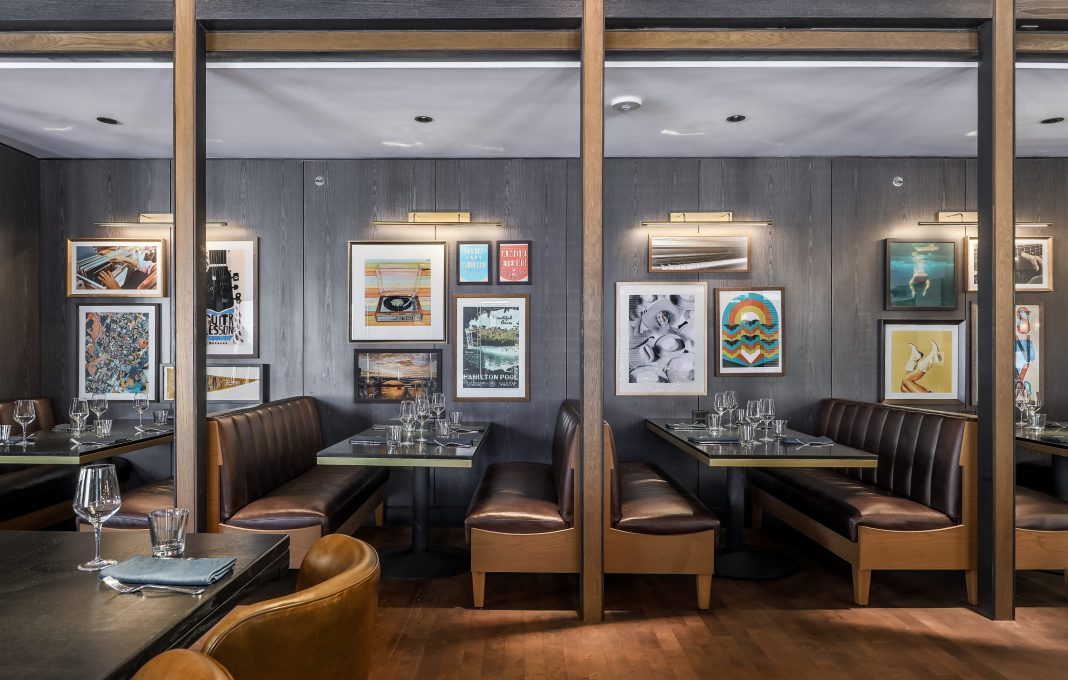Hotels are emerging as new “third places” for remote work, and curated art is at the heart of the shift—shaping mood, sparking creativity, and grounding professionals in a sense of place.
Today, 32.6 million Americans, about 22% of the U.S. workforce, are working remotely. While this is down from pandemic highs, it represents a lasting cultural shift. The rigid separation between office, home, and social life is dissolving, giving rise to more fluid and flexible workstyles. Professionals are looking for spaces that allow them to complete tasks while also sparking creative thought, fostering collaboration, and supporting their overall well-being.
Hotels, once seen primarily as transient hubs for travel, are emerging as key players in this evolution. By reimagining their lobbies, lounges, and public areas as extensions of the workplace, hotels are positioning themselves as vibrant “third places”, environments that exist between home and office, offering the best of both worlds. At the heart of this transformation is a powerful and defining element: curated art collections.
Art as a Catalyst for Workplace Transformation
Art in hotels has evolved from decoration to a deeper expression of place and identity. Thoughtfully curated art actively shapes the way people interact with a space. It sets the tone, influences mood, and provides a sensory anchor that helps remote workers and traveling professionals shift gears between focus, collaboration, and relaxation.

Research consistently shows that art in work environments enhances cognitive performance, reduces stress, and helps foster creativity. In hotels, where digital nomads often seek both productivity and inspiration, art becomes a tool for transformation, turning a lobby table or lounge corner into a dynamic workplace. These interiors are layered with culture, narrative, and a sense of discovery that makes work feel less transactional and more experiential.
Local Art: Defining Place and Purpose
One of the most effective ways hotels are reimagining remote workplaces is by embedding curated art into their environments. Commissioned works from local artists, site-specific installations, and community-inspired narratives all serve to root the space in its community.
This creates a sense of authenticity and provides professionals with a meaningful connection to the place where they’re working.
For remote workers, this infusion of local culture offers both stimulation and grounding. A mural inspired by a city’s history, a sculpture reflecting natural landscapes, or photography that captures cultural moments can all serve as sources of inspiration. Instead of the sterile environments often associated with corporate offices, these settings feel alive with narrative and identity. That sense of place encourages reflection, inspires new ideas, and makes workdays more memorable.
Sensory Immersion: Supporting Focus and Flow
Curated art collections also enhance the workplace experience through sensory immersion. Visual cues, such as color, texture, and rhythm, play a direct role in shaping how people feel and perform in a space. Bright, layered compositions can energize imagination, while calming, minimalist works can foster focus and reduce stress.
Beyond the visual, art can engage multiple senses in ways that enhance the work environment. Sculptural pieces encourage tactile exploration. Interactive installations can create moments of playful engagement that break up the workday. Even soundscapes or multimedia art can be incorporated to provide atmosphere without distraction. These multi-sensory elements work together to support cognitive performance, reduce fatigue, and help workers sustain flow throughout the day.

Real-World Examples: Art in Action
At Eaton Fine Art, we’ve seen firsthand how curated art collections redefine hotels into dynamic work environments:
- Limelight Aspen: The art collection here moves seamlessly from local inspiration to expansive, thought-provoking perspectives. This blend allows remote workers to immerse themselves in cultural dialogue and creative expression while away from home. The result is a space that feels both stimulating and grounding, ideal for professionals seeking focus and reflection.
- The Otis Hotel, Austin (Acre 41): Here, the art reflects Austin’s music scene, natural beauty, and creative spirit. Vinyl-inspired gallery walls, water-themed pieces, and playful pop culture references create a layered, lively atmosphere. For remote workers, these F&B spaces provide the perfect balance of energy and grounding, whether brainstorming between meetings or winding down after a busy day.
- Hyatt Place Tampa Downtown and Hyatt House Tampa Downtown: The art collection in these sister properties is vibrant and story-driven, channeling the city’s bohemian energy, cultural heritage, and travel history. References to vintage maps, Cuban cinema, and early railroad innovation invite curiosity and exploration. For remote professionals, this creates a workplace environment infused with creativity, cultural richness, and a sense of adventure.
Each of these examples demonstrates how art can transform a hotel into more than just a place to stay. It becomes a place to work, connect, and be inspired.
Designing the Future of Workplaces
As hotels embrace their evolving role as workplaces of the future, the integration of art becomes more than a design choice. It is a strategic investment in human experience. Working professionals are no longer satisfied with sterile co-working setups or purely functional interiors. They crave environments that are flexible, engaging, and reflective of the communities they’re in.
Curated art collections rise to meet these needs with intention and impact. It creates memorable atmospheres that support well-being, inspire creativity, and foster connection. It gives workers a sense of belonging in environments that are, by nature, transient. Most importantly, it positions hotels as not just temporary stops but as integral nodes in the modern work ecosystem.
The New Workplace, Defined by Art
In a world where work can happen anywhere, the environments that stand out are the ones that make people feel inspired, connected, and at ease. Today’s workplace, enhanced by curated art collections, is uniquely positioned to meet this moment, redefining itself as living, evolving spaces where creativity, culture, and productivity intersect.
The takeaway is clear: as the future of work continues to unfold, art will do more than enhance settings; it will shape how and where we work. By taking cues from hotels’ immersive, narrative-driven art collections, workplaces can create environments that engage employees on a deeper level, fostering connection, inspiration, and a sense of belonging.


